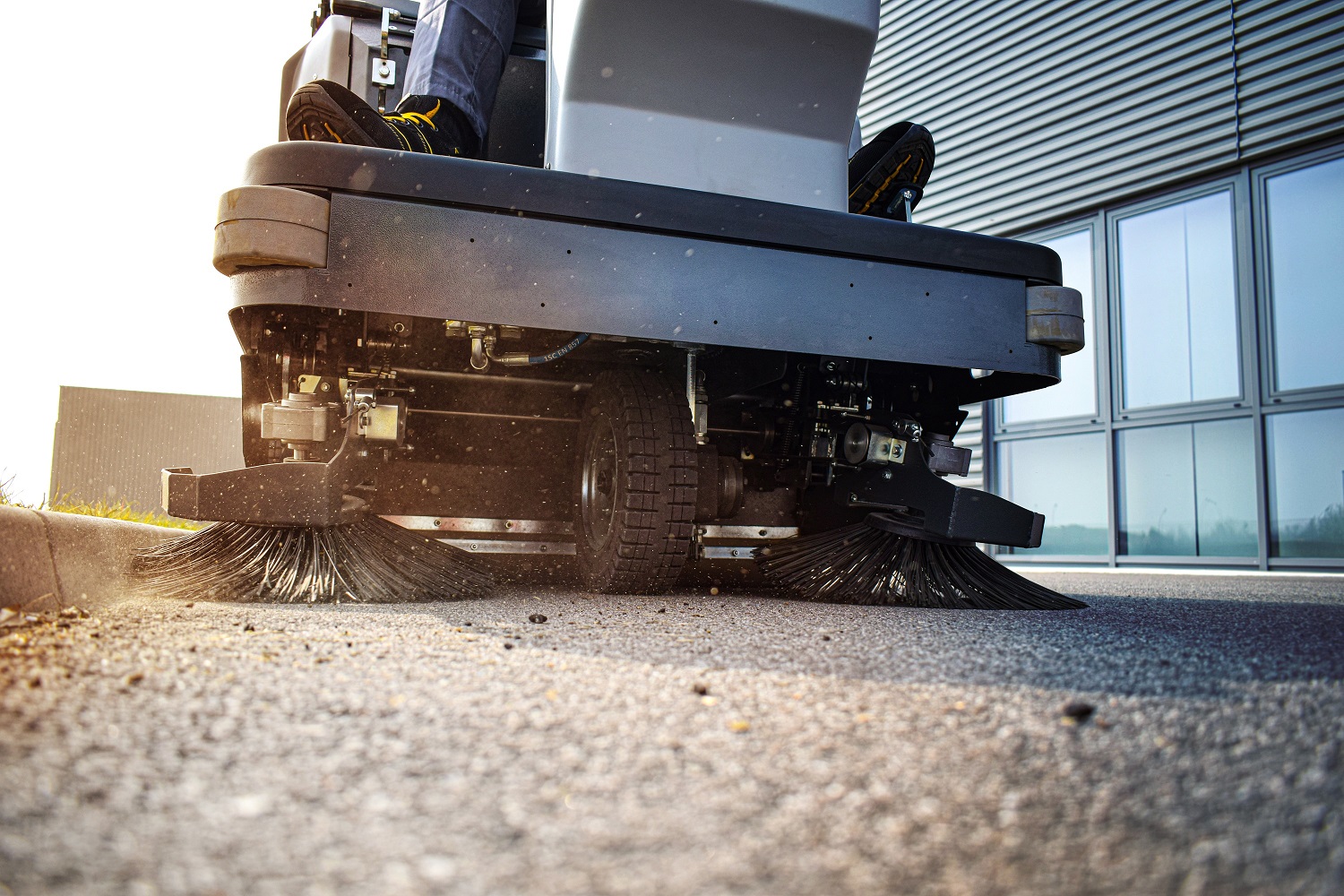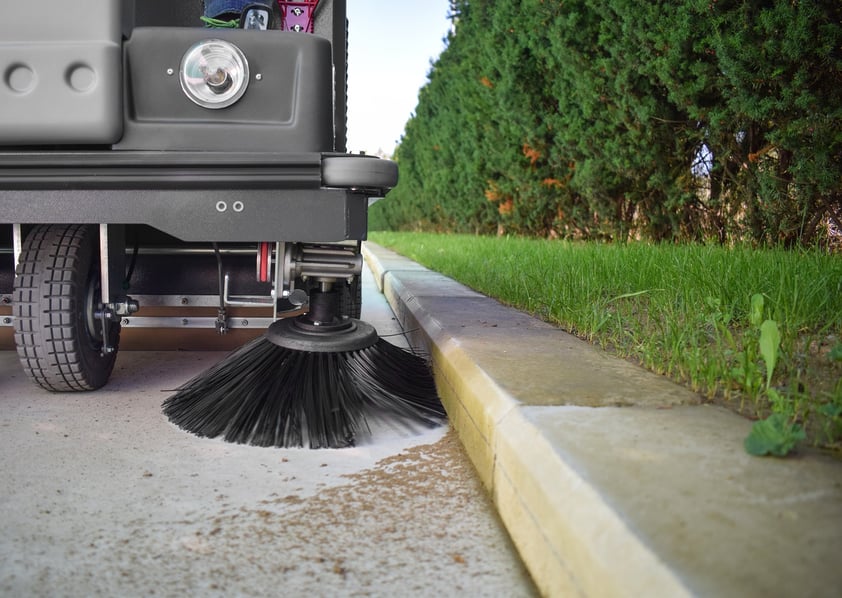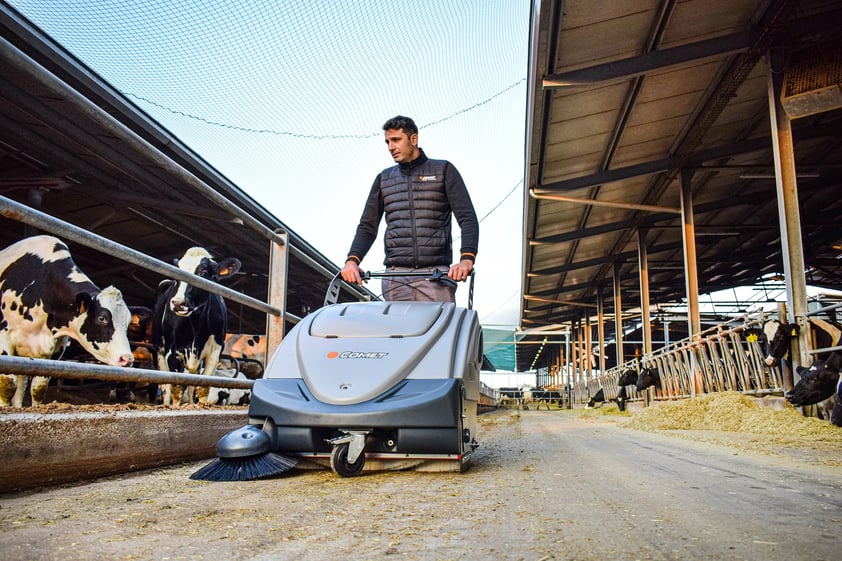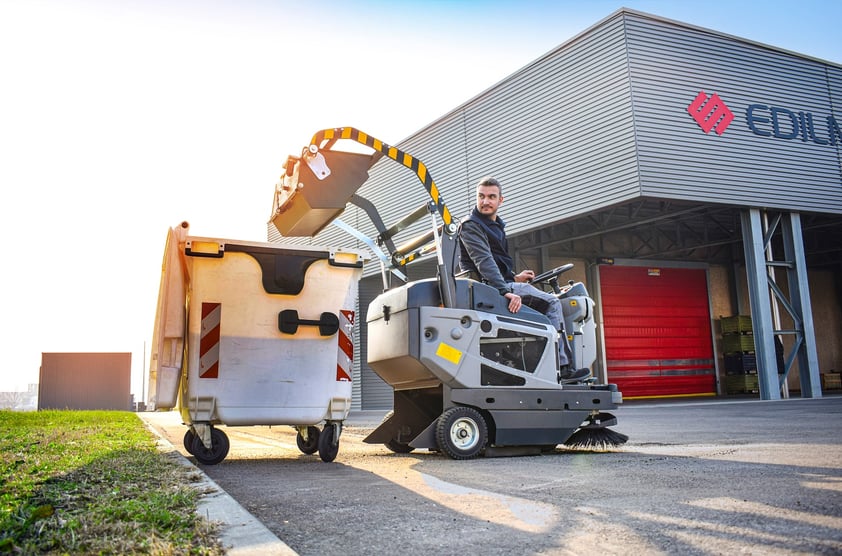Let’s find out how sweepers work as they are ideal for professionally removing dust and debris from floors of all kinds, both indoor and outdoor. From their constituent components up to the different available types, in this article we will look at all the details of these efficient tools.
Fast, efficient, easy to use and effortless for those operating them, sweepers are the ideal tool for cleaning the ground in no time at all, even for the largest surfaces, while removing dust, soil and coarse debris in any condition and on a variety of materials: concrete, asphalt, resilient materials or plastics. That is why they are used in every sector: from schools, hospitals, public buildings, shopping malls, warehouses and industries to larger areas such as ports, airports, and roads.
Conventional tools cannot hold a candle to them: cleaning even a few square meters with a broom and dustpan takes several minutes and one is forced to pick up dirt and empty it into the bucket dozens of times, raising dust and not accomplishing thorough cleaning.
A professional sweeper, on the other hand, accomplishes perfect cleaning in one go and in just a few moments, without having to return to the same spot several times. How is this possible? We will find out in this article.
WHAT ARE THE COMPONENTS OF A SWEEPER
A professional sweeper is composed of a large number of components, which can be divided into 5 main groups:
- Sweeping system;
- Vacuum system;
- Filtering system;
- Waste container;
- Emptying system.
The combined action of these units, therefore, enables fast, precise and effective cleaning of floors. Let’s now take a detailed look at the elements making up the groups listed above and how they make the sweeper work.
MECHANICAL-VACUUM CLEANING
The fundamental principle of the sweeper’s operation and effectiveness is its mechanical-vacuum cleaning system, implemented by the combined action of the sweeping system and the vacuum system.
The sweeping system, in fact, consists of two side brushes - composed of bristles made of natural or synthetic fiber or mixed with steel - that, once the sweeper is operated, rotate and, as they pass over the floor, convey dirt to a roller brush located in the central part of the machine.
At the same location is the vacuum system, which is a suction fan, driven by a turbine, that causes a vacuum in the waste container thus generating the suction of dust and debris conveyed by the brushes. At this point, the filtering system switches on consisting of filters of various materials, e.g. cartridge, bag or panel filters; these filters separate the dirt (which ends up in the waste container) from the air, which thus returns to the environment filtered and clean through an outlet. The most advanced sweepers are also equipped with a filter shaker that helps the filter stay free of dust, and thus more effective.
When the work is done, the emptying system operates to release what has been collected into the appropriate containers for disposal: it can be manually or mechanically activated and, for the most updated models, is equipped with a hydraulic system for lifting the container and automatically unloading it at height.
DISCOVER THE NEW COMET CSW 1300 AND 1600 DSA SWEEPERS
RIDE-ON AND MAN-BEHIND MODELS
Depending on the way they are driven, we can distinguish between ride-on and man-behind sweepers.
The man-behind sweeper - more compact and maneuverable and suitable for narrow and less extensive spaces - is propelled by an operator who walks behind the machine and operates it by means of a handle.
DISCOVER COMET MAN-BEHIND SWEEPERS
Ride-on sweepers, on the other hand, are similar to small vehicles in that they are equipped with a seat for the operator, a driver's station with a steering wheel, pedals and knobs for maneuvering, and a drive system connected to wheels. This model is suitable for cleaning large spaces requiring more working time: therefore, compared to the man-behind model, it is more powerful and offers higher output and longer operating time. It undoubtedly reduces operator effort even further, carrying the operator comfortably on board instead of walking to push the machine.
DISCOVER COMET RIDE-ON SERIES SWEEPERS
POWER SUPPLY
Sweepers, as we have said, are suitable for both indoor and outdoor use. Depending on the environment in which they are to be used, however, the most suitable power supply must be chosen.
Sweeper engines, in fact, can be either petrol or diesel-powered or battery-electric. The former, as can be guessed, emit exhaust gases that are incompatible with indoor use. The latter, on the other hand, are totally emission-free and certainly less noisy, perfect for sweepers to be used indoor.
In any case, whichever type you choose, you can be sure that you will get flawless cleaning and, whatever the area in which you need to use it or the frequency of cleaning required, you will be able to sweep your floors in no time and effortlessly.















